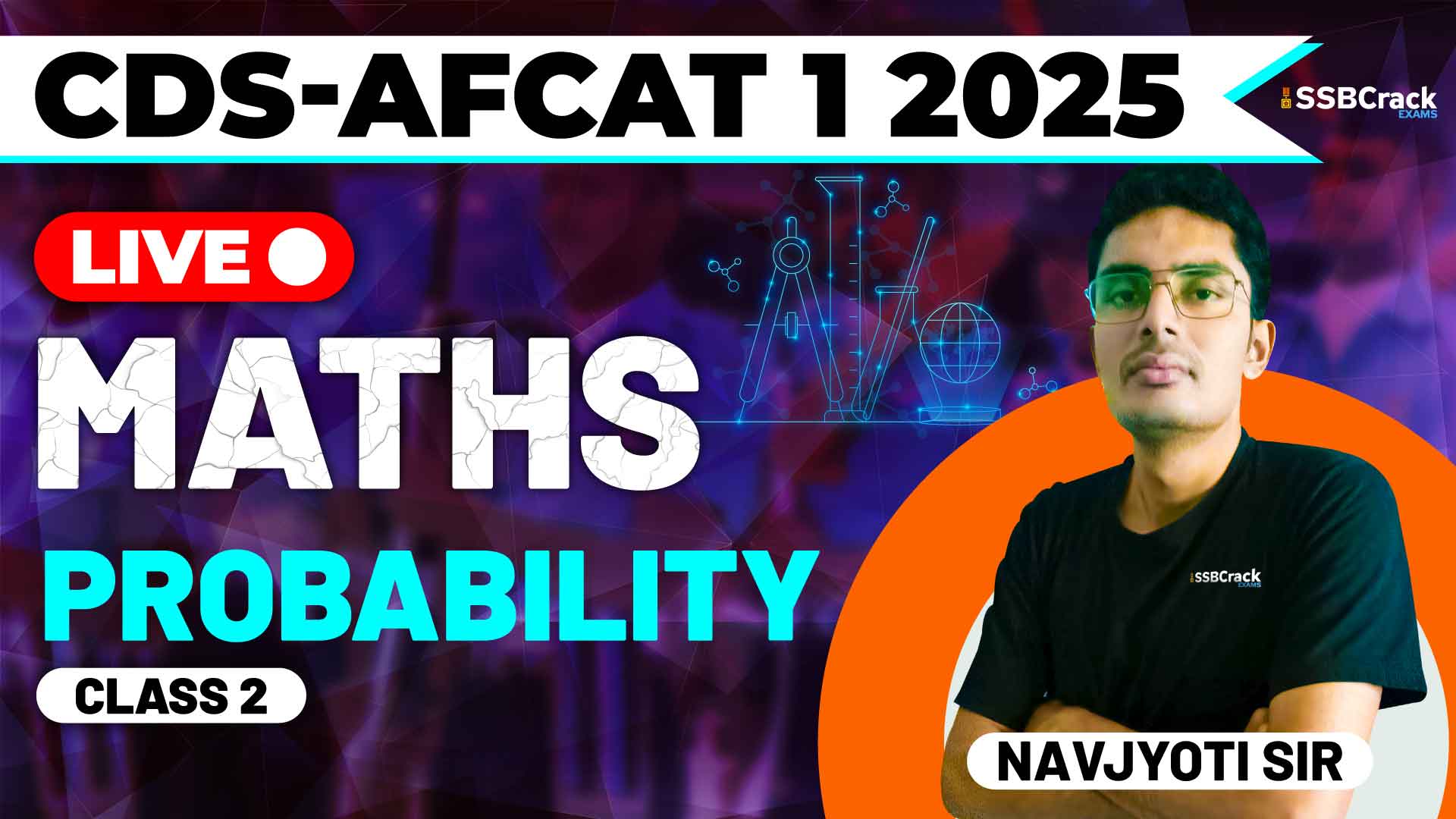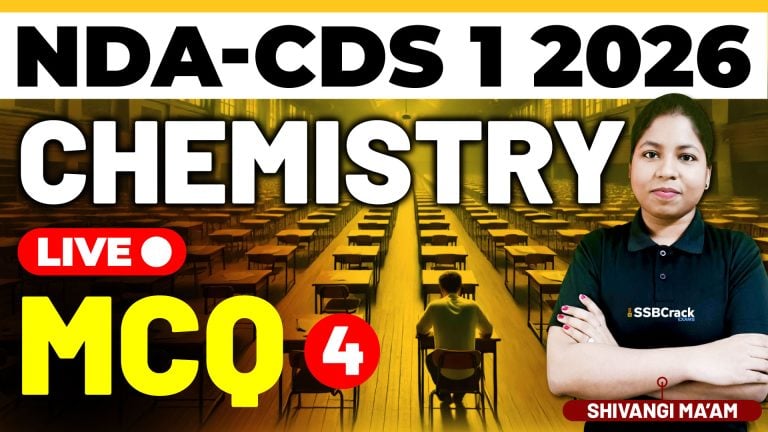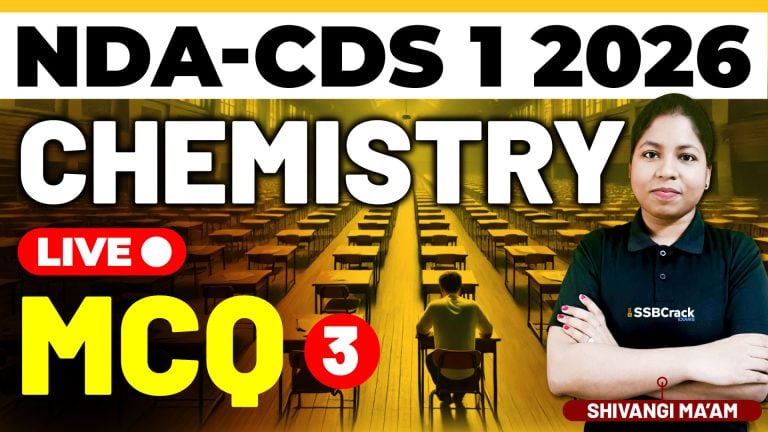In the preparation for competitive exams like the Combined Defence Services (CDS) and Air Force Common Admission Test (AFCAT), Probability stands out as a crucial topic in the Mathematics section. A recent class focused on practicing Multiple Choice Questions (MCQs) related to Probability, helping students sharpen their problem-solving skills and understand the patterns typically encountered in these exams.
This blog will provide an overview of the Probability topic discussed during the class and offer strategies to prepare effectively for Probability-related questions in the CDS and AFCAT exams.
Key Concepts of Probability Covered
Probability is the study of uncertainty. It revolves around determining the likelihood of an event happening. In competitive exams like CDS and AFCAT, probability questions often test your ability to calculate outcomes based on simple events like tossing coins, rolling dice, or drawing cards.
Let’s break down the key concepts discussed in the class:
1. Random Experiments
A random experiment is a process that results in one or more outcomes, but the exact result cannot be predicted. For instance, tossing a coin or rolling a die are classic examples of random experiments. The outcome is uncertain until it actually happens.
2. Sample Space
The sample space represents all possible outcomes of a random experiment. For example, when tossing a coin, the sample space consists of two possible outcomes: heads or tails. Similarly, for rolling a die, the sample space is the numbers 1 through 6.
3. Events
An event refers to a specific outcome or set of outcomes from the sample space. For example, rolling an even number on a die (outcomes: 2, 4, 6) is an event within the larger sample space of possible outcomes (1, 2, 3, 4, 5, 6).
4. Common Probability Problems
- Coin Tossing: Questions on tossing one or multiple coins are frequent in exams. The number of possible outcomes grows with each coin added. Tossing a single coin gives you two outcomes, while tossing two coins gives you four possible outcomes (e.g., HH, HT, TH, TT).
- Rolling Dice: Dice-rolling questions often involve calculating the likelihood of a particular outcome (like getting a 6) or a combination of outcomes (like rolling two dice and getting a sum of 7).
- Card Drawing: A standard deck of cards contains 52 cards, and probability questions can involve determining the likelihood of drawing a specific card (like an ace or a red card). These problems test your understanding of both simple probability and conditional events.
Strategies to Prepare for Probability in CDS and AFCAT Exams
Probability questions can seem straightforward, but they require a clear understanding of the core concepts and a systematic approach to solving problems. Below are some strategies that were emphasized in the class to ensure strong preparation:
1. Understand the Basics Thoroughly
Begin by solidifying your grasp of fundamental concepts like random experiments, sample spaces, and events. These are the building blocks of probability and will help you easily transition to more complex problems. Pay special attention to understanding how sample spaces expand when dealing with multiple events, such as tossing several coins or rolling more than one die.
2. Practice a Variety of MCQs
The recent class heavily focused on practicing MCQs related to Probability. Repeated exposure to these questions is crucial for understanding the different ways examiners can twist the same concept. Go through previous years’ question papers and practice problems that involve multiple events or require calculating probabilities based on more than one factor.
MCQs from topics like coin tossing, dice rolling, and card problems are particularly common in CDS and AFCAT exams. Ensure you are comfortable with:
- Basic single-event questions (e.g., probability of rolling a 5 on a die)
- Multi-step problems (e.g., probability of getting two heads in three coin tosses)
- Conditional probabilities (e.g., probability of drawing a card that’s a red ace, given that the first card drawn was a heart)
3. Master Problems Involving Multiple Events
Once you are comfortable with single-event problems, move on to more complex scenarios that involve multiple steps. For instance, questions involving two events with ‘and’, ‘or’ etc.
For dice problems, practice calculating sums, products, or specific outcomes that involve two or more dice. Similarly, for card problems, familiarize yourself with drawing cards with or without replacement, as these variations affect the sample space and probabilities.
4. Visualize with Diagrams and Tables
Probability questions often involve large sample spaces, especially when dealing with multiple events like coin tosses or dice rolls. Drawing out a table or using a probability tree can help you visualize all the possible outcomes, making it easier to organize information and avoid mistakes.
For example, when tossing two coins, drawing a 2×2 table with the possible outcomes (HH, HT, TH, TT) allows you to see all outcomes at a glance, helping you calculate probabilities more effectively.
5. Time Management
Probability questions, especially the more complex ones, can be time-consuming. Therefore, practice solving problems under timed conditions. This will help improve your speed and accuracy, enabling you to handle tougher questions more efficiently during the exam.
6. Focus on Accuracy
While speed is important, accuracy is crucial. Probability questions often have close answer options, and one small error in your calculations can lead you to the wrong choice. Always double-check your logic and reasoning before selecting an answer, particularly when dealing with multi-step problems.
7. Revise Formulas and Concepts Regularly
Although probability doesn’t involve complicated formulas, it’s important to regularly revise the key concepts. Understanding how to calculate the total number of possible outcomes, favorable outcomes, and conditional probabilities will make it easier to solve questions under exam pressure.
Conclusion
Probability is a topic that blends both logical thinking and mathematical reasoning. In competitive exams like CDS and AFCAT, Probability questions can vary from simple to moderately challenging. The recent class emphasized practicing a wide variety of MCQs, which is essential for mastering this topic.
To prepare effectively, start with the basics, practice as many MCQs as possible, and build up to more complex problems involving multiple events. Make use of diagrams and probability trees to visualize outcomes, and focus on managing your time effectively during the exam. With consistent practice and a clear understanding of the underlying concepts, you can excel in Probability questions in the CDS and AFCAT exams.
Probability may appear daunting initially, but with the right strategies and regular practice, it becomes a rewarding topic that can significantly boost your overall score.



















